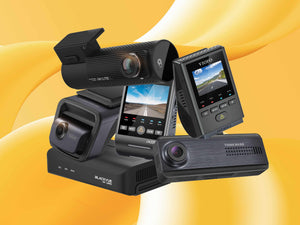Some tips and tricks with installing dash cams for BMW vehicles
How to Hardwire a Dash Cam for BMW & Audi
Tips and Tricks for BMWs & Audis
Some modern vehicles such as BMWs and Audis come equipped with a battery detection system that identifies any power consumption or drain while the car’s switched off. As a result, if you have a hardwired dash cam, it will trigger various error codes including battery drain. We will share some tested solutions to common BMW issues, including odd fusebox locations, delayed ACC fuses and over-sensitive batteries.
For BMW, you could hardwire straight to the battery or to the fusebox.
Fusebox Location & Wiring
Most BMW fuseboxes, while not all, are not as easily accessible as your average vehicle. Instead of being up at the front of the vehicle, they are located in the rear of the trunk. Even if there is a fusebox in the front of the vehicle, it is unlikely that it will have both the constant, and ACC(Ignition-based) connection required for the hardwire installation.
To properly hardwire the camera, you’ll need to run the cable all the way from that rear fusebox in the trunk to the camera on the front windshield. While some dash cams are mounted in a way that allows professional installers to accomplish this with the stock hardwiring kit, many vehicles or camera models will need an extended wire to cover the distance.
BMWs, like other European car models, have very thin panelling, making wiring more difficult, especially when combined with how far the cable must be run from the trunk. Camera models with thick cabling, such as VIOFO, are not ideal for wiring into BMWs.
Delayed ACC Fuses
BMWs fuseboxes themselves also have plenty of traps that are not ideal to wire to such as Delayed ACC fuses. Delayed ACC fuses are fuses that are not proper constant power connections - they continue to operate for approximately 15 mins after the car’s turned off. Determining which of the fuses are delayed ACC and which are standard is challenging. Many delayed ACC fuses will get “tripped” turning back on when basic functions of the vehicle are performed, such as opening the car door, or unlocking it with your keys.
To avoid such issues, we recommend leaving the door that accesses the fusebox ajar for 15~ minutes, and returning to the fusebox at that time for testing, a practice we follow in all of our BMW installs. Any fuses you are wiring to, that previously indicated power once the vehicle has been turned off, should be tested using a circuit tester or Voltmeter.
Battery Discharge Error
While hardwiring is recommended, issues can still be experienced due to BMW batteries. BMWs do not like any kind of excess power drain on the vehicle’s battery once the vehicle is turned off. Generally, their electronic systems remain over-sensitive and can display error codes on the dashboard, indicating battery discharge while the car was parked.
We have observed that in newer, 2021 onwards BMW models, this can even disable all electronics and vehicle functions soon after the car is off, including key signals, overhead lights, and the dash cam itself. These functions will be restored once the vehicle is turned back on manually.
In any case, returning to the vehicle and seeing a warning sign never feels great. You are able to avoid this by setting a very high voltage cut-off on your dash cam, but that frequently feels counterintuitive, since it limits the duration of parking mode that you’re wired to the fusebox for. With this, parking mode will only last for a couple hours at most.
Dash Cam Battery Packs
Our recommended battery pack is the BlackboxMyCar PowerCell 8, supporting 25% more charge than an average battery pack, for an average of 25 hours of parking mode, depending on the camera model. No matter where the battery pack is installed, you can check in on it when you are in the vehicle through the Bluetooth application.
Our solution to the issues above is battery packs. Battery packs are used as an alternative powering method to the car battery when the car is off, circumventing nearly all the issues above. Battery packs only need to be charged when the car is on, and can even be powered via cigarette lighter adapter, allowing for the power cables for the battery to be kept in the front of the vehicle. This works as long as the cigarette socket of the vehicle turns off with the vehicle.
If you are hardwiring a battery pack for quicker charging, you’ll still need to be on the lookout for delayed ACC fuses. You should choose a true ACC fuse that only powers on with the vehicle. Splicing into existing cabling going through the vehicle can be done for an easier-to-find ACC connection. However doing so is riskier and recommended only for people with electrical experience. Wiring directly to the vehicle battery will not bypass these issues.
Since the battery pack is independent of the BMW electrical systems, this will allow a full length of parking mode off of the battery pack, completely avoiding any potential error codes or battery issues in your BMW. This also applies to electric vehicles (such as Teslas), hybrids with small accessory vehicles, or really any vehicle that shouldn’t have additional power draw once the car is off.

